A complete guide to wind turbine inspection


· 7 min read
The world is home to over 341,000 turbines.
Now, let’s do a little math. Manual means, be it ground-based monitoring or rope-access operation, takes more or less six hours to look over a turbine. Given that they’re done no more than twice a year, how many hours go into inspections for an average wind farm?
A whopping 4.1 million hours. We’re talking about 467 years of downtime, all without taking into account change orders, weather-related delays, and other externalities that may as well drag out the process for another couple of decades.
As a matter of fact, inspections don’t have to be a hassle. More on that later.
For now, we get it. Standing taller than the pyramid at 466 feet with an average wingspan of 418 feet, it’s almost counterintuitive to think that a mammoth piece of steel as that of a wind turbine would need to be looked at more than once or twice a year.
Don’t let looks fool you, though. Turbines happen to be deceivingly fragile creatures despite their monstrous presence. Particularly for rotor blades made of fiberglass, a seemingly negligible surface rust on the leading edge can lead to a dramatic loss in energy production.
This is all to say that keeping tabs on turbine status is of paramount importance. Preventing everyday wear and tear from brewing into bigger problems is vital for optimal performance and a viable lifespan.
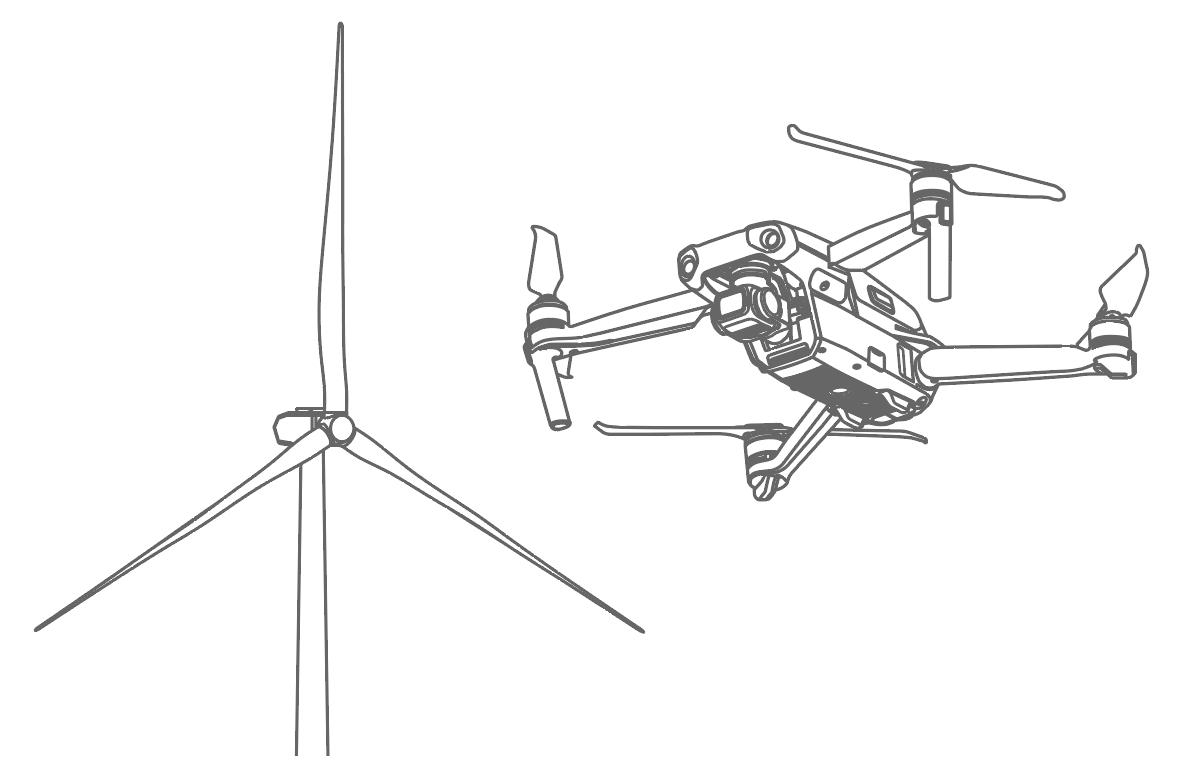
There are two ways to go about manually inspecting a turbine.

A typical rope access operation is carried out in three strokes.
The most obvious catch here is the looming possibility of fatal consequences. One stiff breeze and the rope gets in the way of the trailing edge of the blade, that’d mark the beginning of an end to an irreversible tragedy.
Technicians themselves know full well what they’re getting into. If anything, the insurance fees listed below steep service charges and miscellaneous expenses should speak to how uber-aware they’re of such risks.
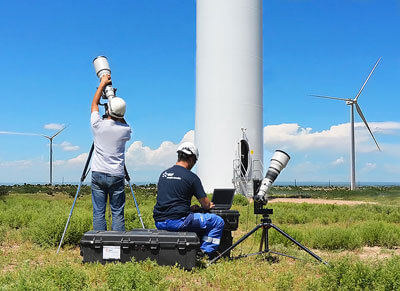
Source: Courtesy of Windpower Engineering & Development
Looking at a turbine through the lens of a high-resolution camera from the ground is one of the safest inspection methods out there. Yet there’s a reason why most wind farms rely on rope access to look after their assets.
Consider this for a moment. Even with the most advanced full-frame cameras, it takes a slew of snaps from different angles and ranges to capture a clean portrait. Well, good luck catching millimeter-sized cracks 200-plus feet above the ground.
Case in point: ground-based methods tend to be ridden with bad data. After all, what good is an inspection if much of the images collected during the process turns out to be moot?
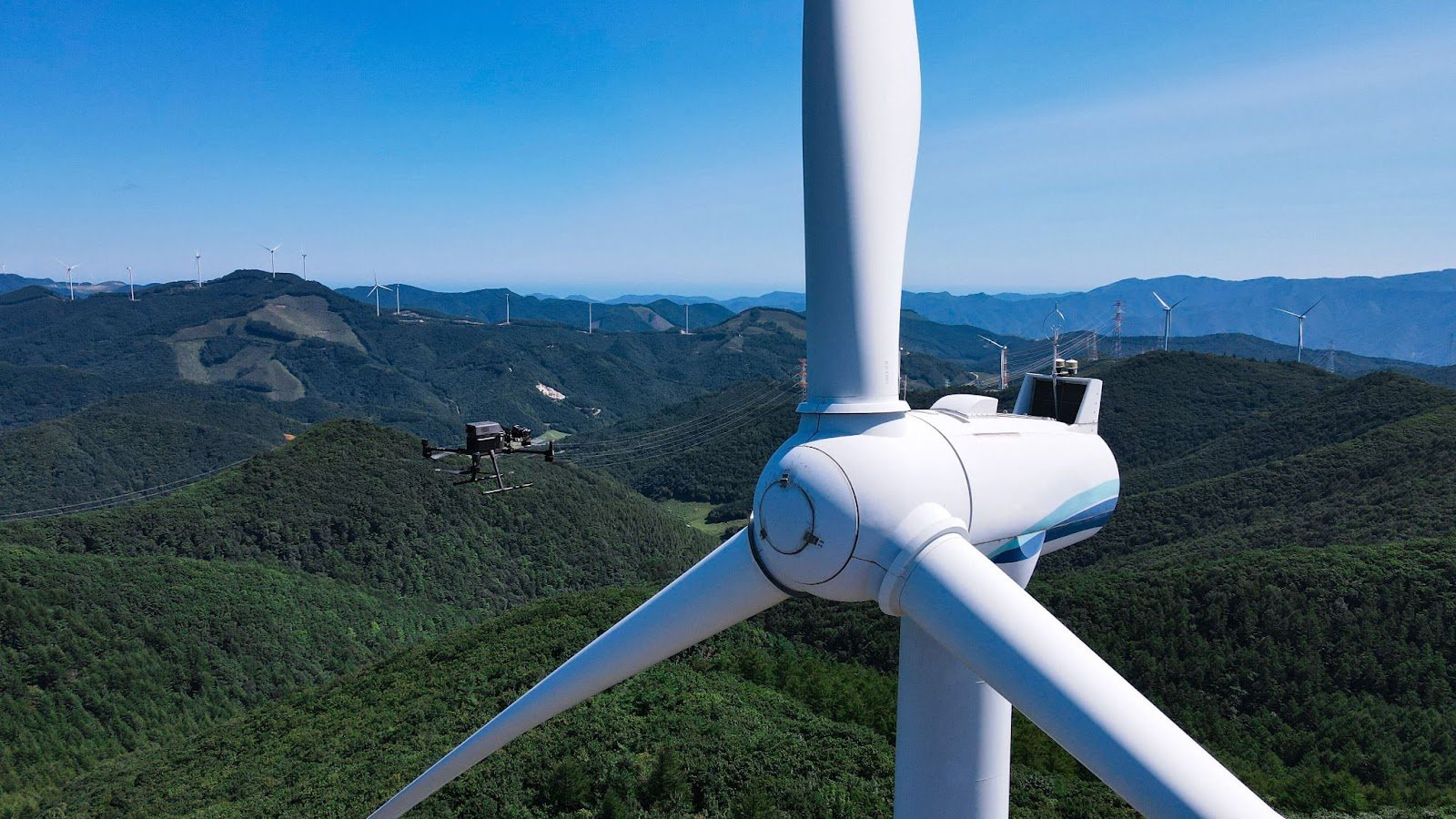 As much as 90 percent of the addressable market in the U.S. rely on drones for wind farm inspections
As much as 90 percent of the addressable market in the U.S. rely on drones for wind farm inspections
Leaving defect detection and preventive maintenance under the purview of traditional inspection techniques is dicey at best.
But every cloud has a silver lining. Casting a slither of light across the bleak picture painted by drawn-out manual processes is none other than uncrewed aerial vehicles (UAVs). Inspections have turned the corner since these little robotic aircraft entered the scene.
To put things into perspective, tapping into autonomous drone solutions can lead to a 70 and 90 percent drop in inspection and downtime costs, respectively.
And that’s just a fraction of what they have to offer. Wind turbine inspection drones are like a gift that keeps on giving.
Just because wind farms are devoted to the cause of sustainable energy production doesn’t mean they operate out of sheer goodwill. At the end of the day, it’s the figures on the books that keep the turbines spinning, not altruistic motives.
By that token, every second the turbines stay still is a financial toll. Rack up hours of downtime that snowball into days, weeks, and eventually a month; the amount of lost revenue from inspections can turn out to be crippling. Hence the reason why most wind farms determine against giving their assets a look more than twice a year.
With drones, however, that’s no longer the case.
Not only does UAV inspection come at a fraction of the cost, but take much less time to inspect the turbines – a task that could eat up the whole day for a three-man squad of the most qualified rope access specialists.
By harnessing the power of drone solutions that give way to cost-efficient, hassle-free checkups, wind farms will have plenty of uptime to fit in additional rounds of inspections without letting downtime costs spiral out of control.
Imagine going into an annual physical only to come out after getting a cursory examination of your general appearance. Ludicrous, right? As if there isn’t so much more to health than looking fit.
The same goes for wind turbine components. Just because they appear defect-free doesn’t mean everything is sunshine and roses underneath. The only way to gauge the true status of the assets is by factoring in the sanctity of the internal structure.
Unlike its exterior counterpart, drones and humans aren’t the only primary means available. Wheeled crawlers and hyperthin fiberscopes also make up the pool of potential inspection methods. While the two are worthy of consideration, keep in mind that both are bound by spatial limitations.
That’s what seems to give drones the edge when it comes to internal inspections. Equipped with infrared cameras or ultrasonic payload, drones can identify irregularities below the surface with laser-sharp precision across areas that neither humans, cable cameras, nor robotic crawlers can see nor access.
As another food for thought, the law prohibits an inspector from traversing past 91 feet. That leaves about 60 percent of an average-sized blade unexamined. For offshore wind turbines, to which every day is yet another battle against salt-induced internal corrosion, the tight regulatory ceiling alone is enough to throw manual inspections out of the question.
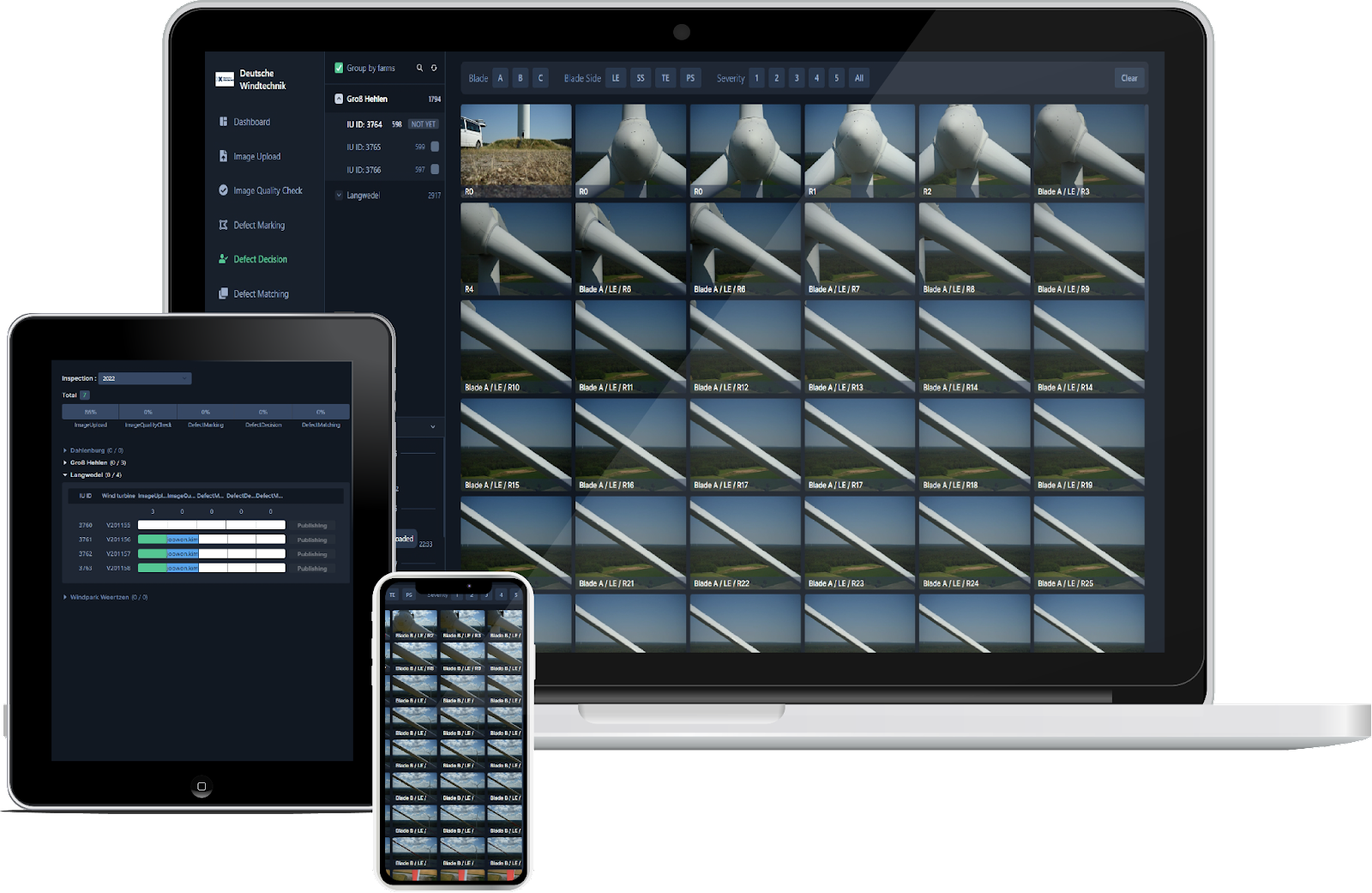
Gathering data is one thing, making sense of it is another.
Suppose, for the sake of argument, there’s no marked difference between manual and UAV inspection systems in terms of efficiency, reliability, and safety. Still yet, most wind farms would opt for the latter given the choice.
How so? Each inspection yields a bulk of data. And even for the most trained set of eyes, sorting through hundreds of images is a grueling endeavor.
Don’t get us wrong. Raw data won’t magically mold into actionable insights just because inspections are done with drones. But certain analytics platforms have the ability to automate various stages of data analysis and reporting.
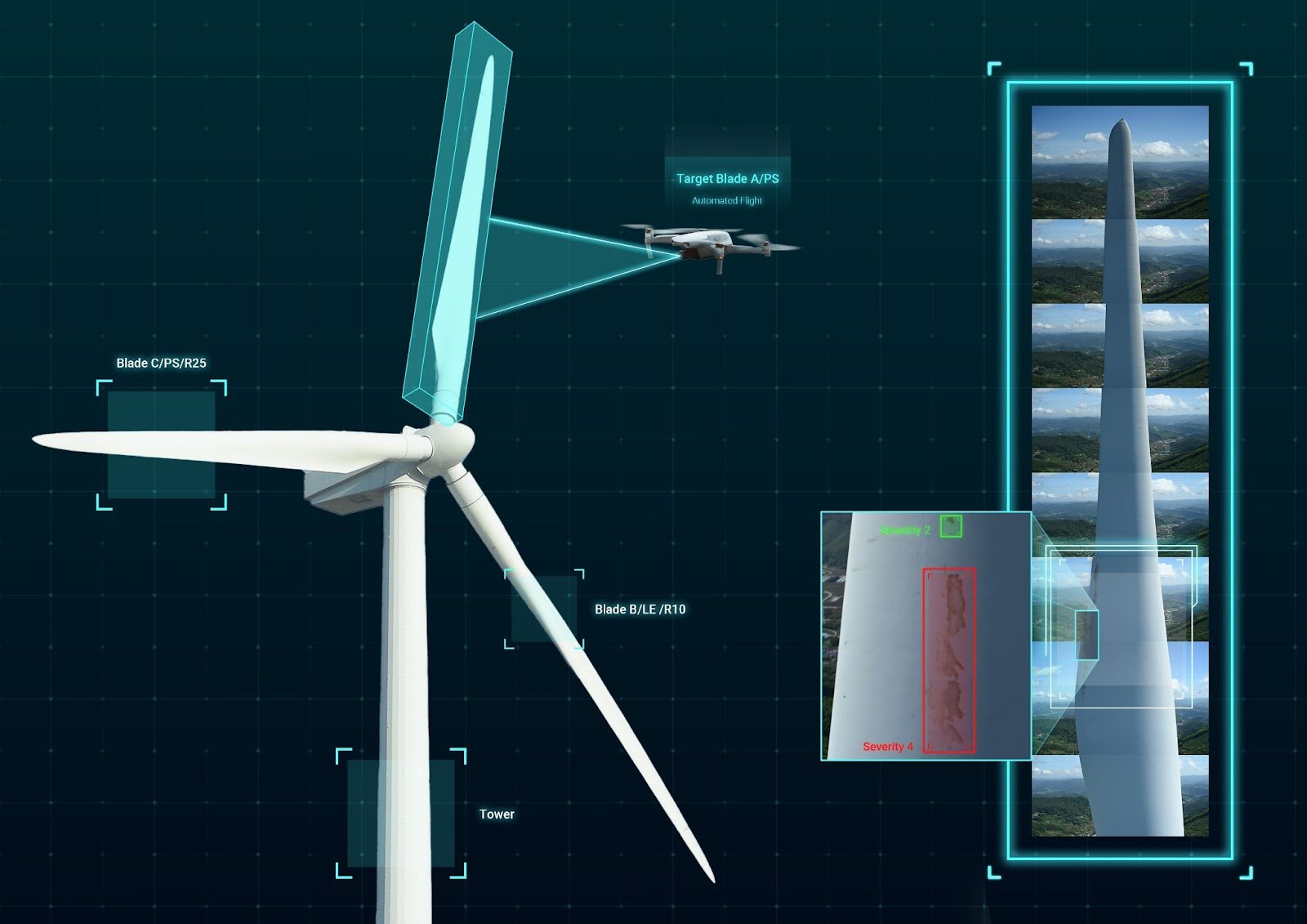
Dave Chapelle said it best – modern problems require modern solutions.
As a massive ramp-up in investments from companies and governments fuel a new level of growth in wind power, the demand for a cost-effective O&M solution that gives way to regular inspections will grow manifold.
And before we know it, the old school days of dispatching technicians across onshore and offshore wind farms to indulge in precarious and time-consuming inspections will be long gone. That very gap will be replaced by ever-maturing drone technology.
To stay ahead of the curve in this rapidly evolving renewable energy landscape, wind farms must learn to embrace remote diagnostics complemented with in-depth analytics.
This article is also published on NearthLab. Future Thought Leaders is a democratic space presenting the thoughts and opinions of rising Sustainability & Energy writers, their opinions do not necessarily represent those of illuminem.
Andrea Gori

Climate Change · Carbon
Yury Erofeev

Battery Tech · Mobility Tech
illuminem briefings

Renewables · Wind
Eurasia Review

Carbon · Wind
Eco Business

Wind · Renewables
Mirage News

Green Tech · Renewables